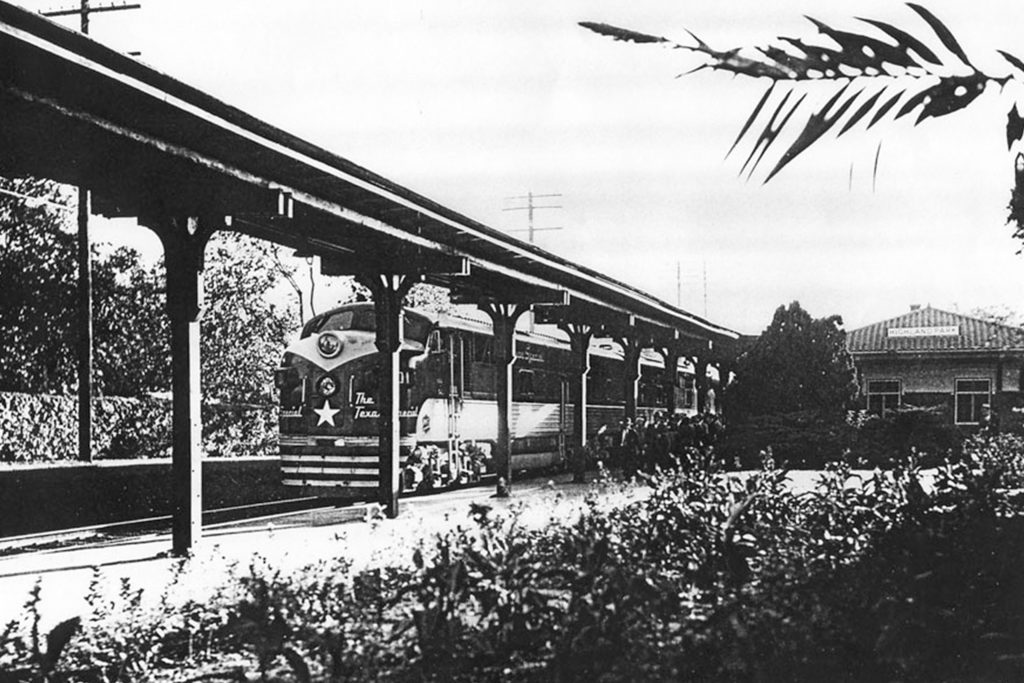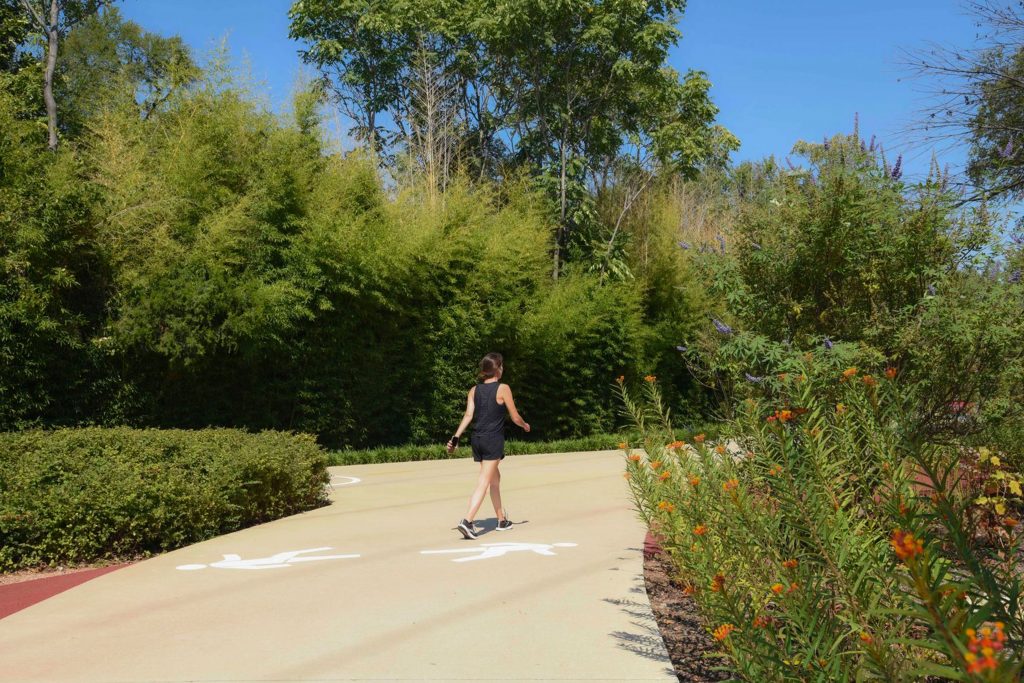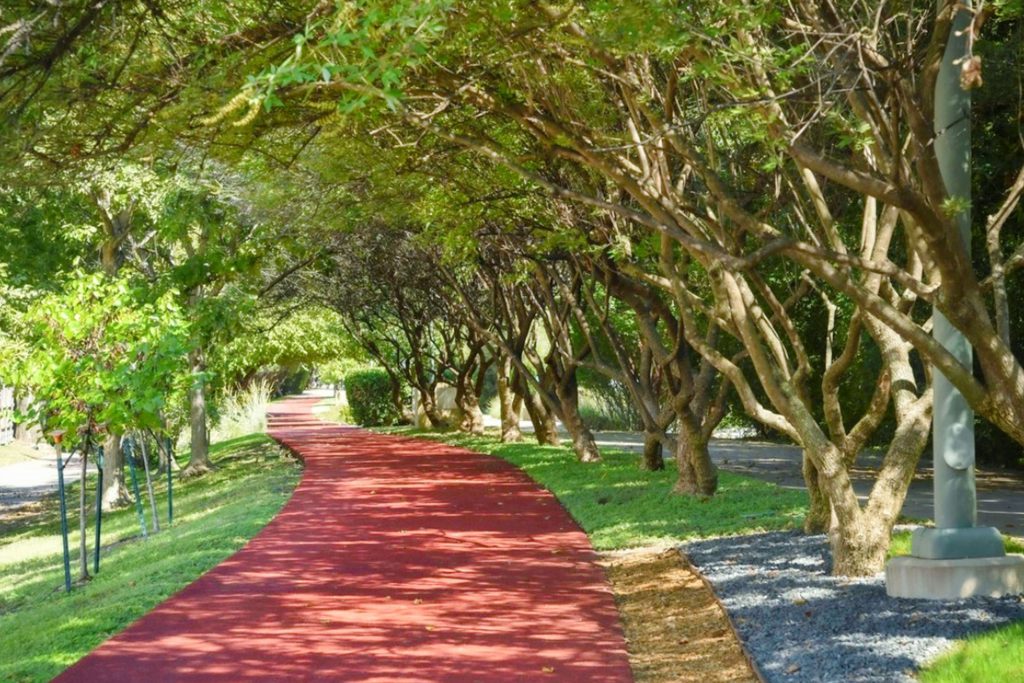From Steel to Green: How the Katy Trail Transformed Dallas Twice
On any given day in Dallas, visitors to the Katy Trail will find a tree-lined big city oasis packed with people. One of the Big D’s most popular amenities, the Katy Trail, attracts more than 1.5 million people each year. Many of these users are nearby residents who use the trail for daily runs or rides. The 3.5-mile trail is also host to events, celebrations, and the occasional celebrity sighting.
For regular trail users, it may be difficult to imagine a time when the Katy Trail did not exist. But the history of the trail is a story of urban beautification with a story that stretches back to the earliest days of the city. For more than a hundred years, the trail has played a central role in Dallas’s growth, development, and cultural life.

A Steel Rail Trail Through Dallas
Before the Katy Trail became packed with joggers, it was a pre-highway thoroughfare through the center of a bustling Texas city. Although Dallas was founded in the 1840s, its real growth as an urban center didn’t really take off until the arrival of the railroads in the years after the Civil War. One of the earliest was the Union Pacific Railroad’s Missouri-Kansas-Texas Railroad, which connected the country’s first transcontinental railroad with the southern states. It was appropriately nicknamed the Southern Branch.
For decades, the MKT Railroad — which was eventually shortened to “K-T,” eventually colloquialized as “Katy” — was an important transportation route in Dallas. In addition to carrying freight into the city, passenger service along the Katy Railroad connected the growing suburbs north of the city with downtown Dallas. By the 1960s, as the growth of the interstate highways system saw more travel via auto, passenger service along the line was phased out. By the late-1980s, freight use of the Katy also ceased, and in 1993, the Union Pacific donated the abandoned Katy Railroad lines to the city of Dallas.

A Greenbelt Vision
In the 1990s, Dallas was looking to reimagine its public transportation system, and the original plan for the donated Katy Railroad tracks was to incorporate it into the new Dallas Area Rapid Transit (DART) light rail system. But opponents of that plan living near the tracks suggested another use: transform the railroad into a greenbelt that could offer a pedestrian link between downtown Dallas and some of the city’s wealthiest neighborhoods. The community created a nonprofit organization, Friends of the Katy Trail, to organize efforts, and they eventually hired the landscape architecture firm SWA to create a master plan.
The plan laid out a vision for a 3.5-mile, tree-lined trail that roughly followed the path of Turtle Creek from downtown Dallas to DART’s Mockingbird Station. Future plans saw the trail connecting to an expanded trail network, and today the Katy Trail is a central piece of the proposed Loop project that hopes to connect most of Dallas with pedestrian and bike trails. Since the opening of the Katy Trail, the Uptown neighborhood located between downtown Dallas and the neighborhood of Highland Park has seen tremendous growth as new residents look for ways to live near this popular amenity.

Life on the Trail
Today the Katy Trail is one of the most popular destinations in Dallas — so popular, in fact, that awareness of trail etiquette has become vital to handling the large crowds on the weekends. The trail is free and open to the public, and many Dallasites use it for their daily runs, walking their dogs, or meeting up with friends. But there are a few rules that help maintain this shared urban asset for everyone. These include:
- No motorized vehicles.
- Bicyclists must stay below 10 mph.
- Groups cannot walk more than two people side-by-side.
- Dogs must be kept on short leashes.
- Pedestrians and bicyclists must keep to the right.
- Curb your pet.
- Stay aware of your surroundings, even when wearing headphones or looking at your phone.
The trail is also home to many popular events each year. One of the oldest is the Katy 5K, a festive celebration run that takes place each September and charts a course along the trail as well as through the streets of Uptown Dallas. Other popular events include the Holiday Party on the Trail, a North Texas Giving Day Celebration, the Katy Trail Fall Artists Talk on the Trail, and regular social meetups.

Support the Trail
The Katy Trail has become something like a central square for Dallas. Although it cuts a skinny, 3.5-mile strip through the city, it is a central location for meetups and socializing. Not surprisingly, many neighbors and community organizations who use and love the trail want to help maintain it and contribute to its ongoing success. There are several ways to take an active role in the life of the trail:
- Become a member of the Friends of the Katy Trail.
- Contribute to the Spring Support Campaign, which raises funds for ongoing operations and maintenance.
- Donate to the Greenscape Fund, which supports the ongoing growth of the natural beauty of the trail.
- Become a Community Partner: Urge an organization you run or work for to become a sponsor of the trail.
If the history of the Katy Trail has inspired you to get outside and explore other urban trails, check out our guide to the 8 best bike trails of Texas.
© 2023 Texas Farm Bureau Insurance



